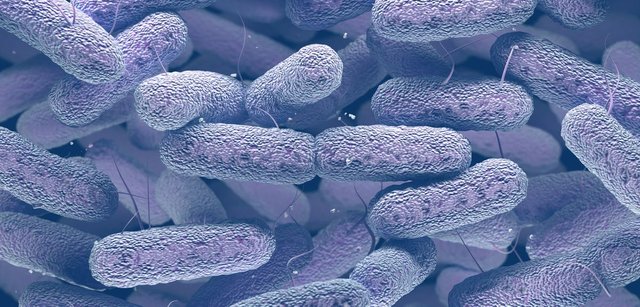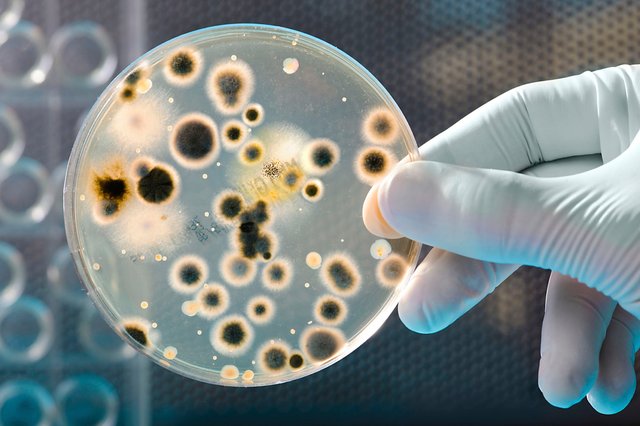THE WORLD OF UNCULTURABLE BACTERIA
Hey Steemians, today while working in lab with some bacteria, I just thought that the microbes are so diverse and interesting, but their diversity is studied only up to 1-2% according to environmental microbiologists. So, I thought to share some information on the unculturable bacteria. Why they are unculturable and how they can be cultivated.


These unculturable bacteria can flourish in their natural conditions but cannot be grown on artificial media in lab. Though these bacteria are uncultivable but they still play major roles in natural cycles like carbon, phosphorus, nitrogen etc.
WHY SOME BACTERIA ARE UNCULTIVABLE
Some possible reasons behind this is problem in replicating the natural environment in lab, lack of nutrient in commercial medium and may be some constituents of media are toxic, or other bacteria in sample produces substances which are inhibitory to the target organism. Another reason behind the unculturability may be disruption of bacterial cytokine networks. Bacterial cytokines are thought to be mediators of bacterial signaling and important in coordinating the growth of component organisms in bacterial biofilms like dental plaque. (Kell DB, Young M. Bacterial dormancy and culturability: the role of autocrine growth factors. Curr Opin Microbiol 2000;3: 238-43).

HOW TO CULTURE THE UNCULTURABLES
Bringing the environment into the laboratory that is mimicking the natural conditions in the lab has been proved to be most successful in culturing a bacterium that had previously eluded microbiologists. Giovannoni and his group used the natural environment in the form of sea water as a growth medium.
Another method for separating uncultured bacteria of interest from the rest of the organisms in their environment while culturing them in a version of their natural environment. Keller group developed a method for encapsulating single bacterial cells in microdroplets of solidified agarose. Extinction series dilution was employed to limit the number of bacteria in each gel microdroplet (GMD), and after encapsulation, the GMDs were contained in flow column bounded by membranes that retained encapsulated bacteria.

After incubation, the GMDs were passed through a flow cytometer, and those that contained a microcolony were sorted into the wells of a microtiter plate, in which phylogenetic analysis and further cultivation carried out. The results of the phylogenetic analysis showed that the unamended seawater yielded higher diversity than seawater with nutrients. (Zengler K, et al. 2002. Cultivating the uncultured. Proc. Natl. Acad. Sci. U. S. A. 99: 15681–15686.) The host-associated environments also play role in the growth of bacteria. The obligate intracellular symbionts or pathogens and, as such, have not been grown outside the host or cultured cell lines. One of the classic examples of this host-associated growth of bacteria is Treponema pallidum, the causative agent of syphilis even after genome of this species is sequenced till date the bacteria cannot be kept in continuous culture. The only reliable method of propagation is live rabbits Lafond RE, Lukehart SA. 2006. The biological basis for syphilis. Clin. Microbiol. Rev. 19: 29–49).

CONCLUDING REMARKS
Although the majority of environmental bacteria are not growing in the labs, but with these techniques and various upcoming techniques it’s now possible to culture some fractions of these bacteria in laboratory. Screening of novel isolates will reveal novel natural products and with isolation of them we will learn about their role in environment, ecology, and nutrient cycling and importantly they will have more profound effects of human health.Happy Reading :)
Vinamra
Cool! I just have one question to make sure I understand this process.
Are you essentially bringing a small sample of the bacteria's environment home with you in the agarose?
By the way I look forward to reading your future post!
There are two different ways to maintain the natural environment for these unculturable bacterias. Either you just incubate in the environment or take back the environment in the lab.
You can read this article for further reference.
Thank You!
Well, one of the lab courses in my faculty has this assingment, where students have to collect soil samples and then they try to cultivate microorganisms living there. One can only imagine how many interesting compounds or biological processess might one day arise when growth of such microorganisms will be possible.
Anyway nice article, great explanation. :)
Thank you :)
nice post and interesting subject. Im also working in lab but we just isolated genomes from uncultured bacteria. Im looking forward to your next post, watch my blog aswell ;)
Thank you :)